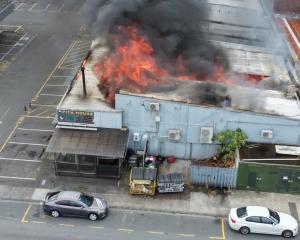
The two quakes measuring 3.1 and 3.9 centred near and under Motutapu Island in the Hauraki Gulf, that struck the region just after 4pm, were felt from south Auckland to Northland.
More than 10,000 people reported to the GeoNet site that they felt the 3.9 tremor and emergency services received about 50 calls after the quake, but none for damage or injuries.
GeoNet seismologist Caroline Holden said earthquakes strong enough to be felt were rare in Auckland - on average fewer than 10 earthquakes were detected in the region each year.
"There are a lot of faultlines in Auckland because of all the volcano fields in the region, but the faultlines are really, really small and can only generally generate quite small earthquakes."
Ms Holden said last night there had not yet been any aftershocks, and if there were they were unlikely to be large enough to be felt.
She reassured Aucklanders that earthquakes on the scale that had rocked Christchurch were highly unlikely in the region.
Small tremors were also not capable of causing volcanic activity, only earthquakes that reached 8 or more on the Richter scale could do that.
"[Yesterday's quakes] really were very small earthquakes in the grand scheme of earthquakes ... very shallow and very close to populated centres. You have to remember Christchurch has been through about 10,000 of those earthquakes."
Ms Holden said scientists didn't yet know whether the eruption was caused by volcanic activity or tectonic plates moving.
"Maybe this is the beginning of something long-term, but at the moment nothing indicates that this is leading to any volcanic eruptions."
Auckland has two active faults: the Drury Fault and the Wairoa North Fault. Both of these faults are located in the southern part of the region and are thought to be capable of producing earthquakes of magnitudes greater than 6.
Movement on these faults occurs about every 13,000 to 43,000 years.
Meanwhile, the Government has a secret list of 200 of the country's most earthquake-prone buildings - and it's growing.
But it refuses to reveal details of the structures, which carry a risk of collapsing like the CTV building, if there was a similar-sized quake to the fatal shakes in Christchurch in 2011. The buildings have what are known as non-ductile columns, which do not have much flexibility.
The CTV building collapse, which killed 115 people, prompted a Government review of other buildings around the country.
The Herald asked the Ministry of Business, Innovation and Employment for a list of the buildings.
Adrian Regnault, general manager of the building system performance branch, confirmed there were 200 buildings on the list but refused to say where they were.
Auckland Council is assessing the city's most earthquake-prone buildings.
A spokesperson said buildings to be assessed had been identified, and more than 4000 buildings could be on its list, but it had not finished the work.
- Amelia Wade and Anne Gibson of the New Zealand Herald











